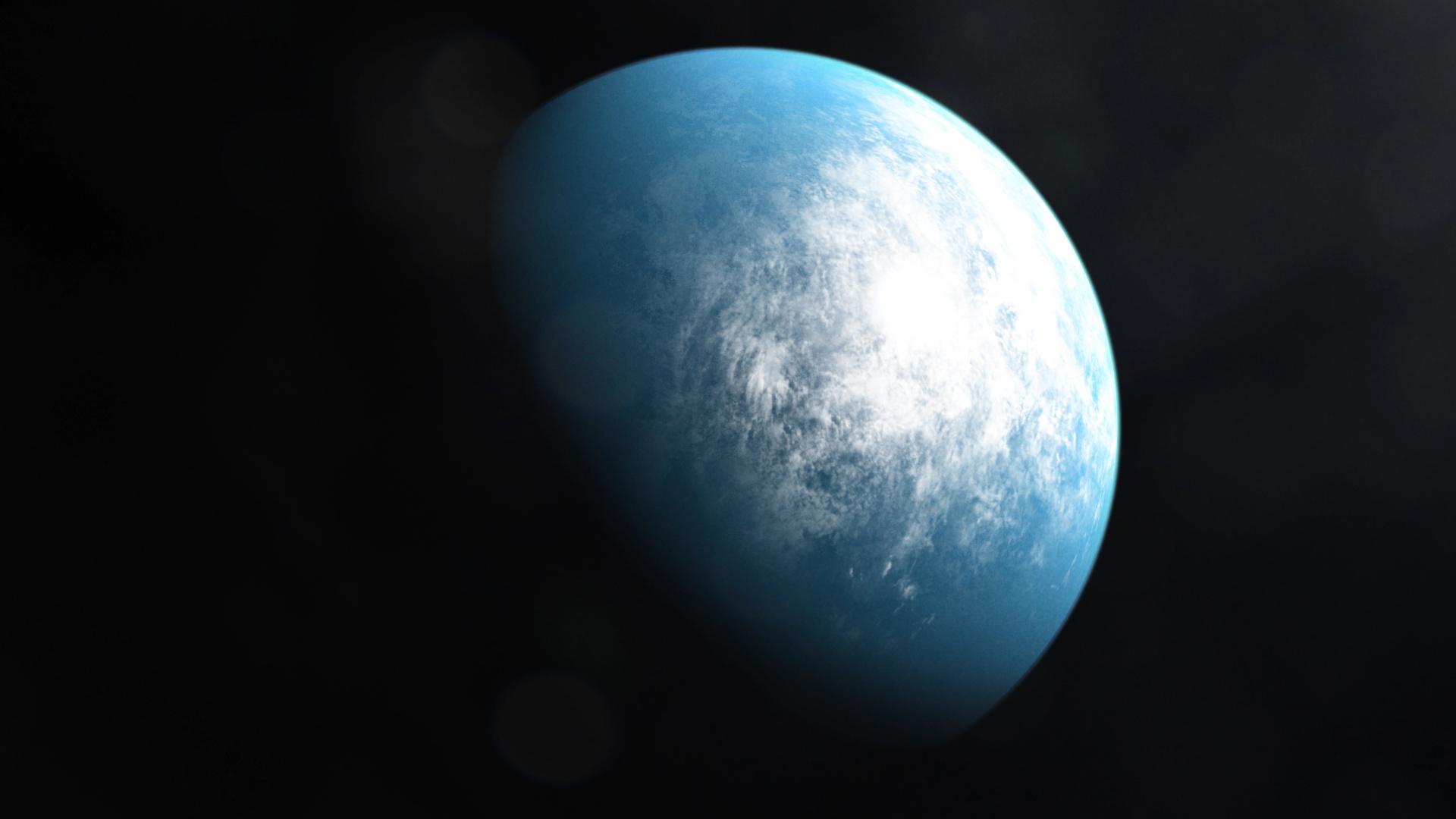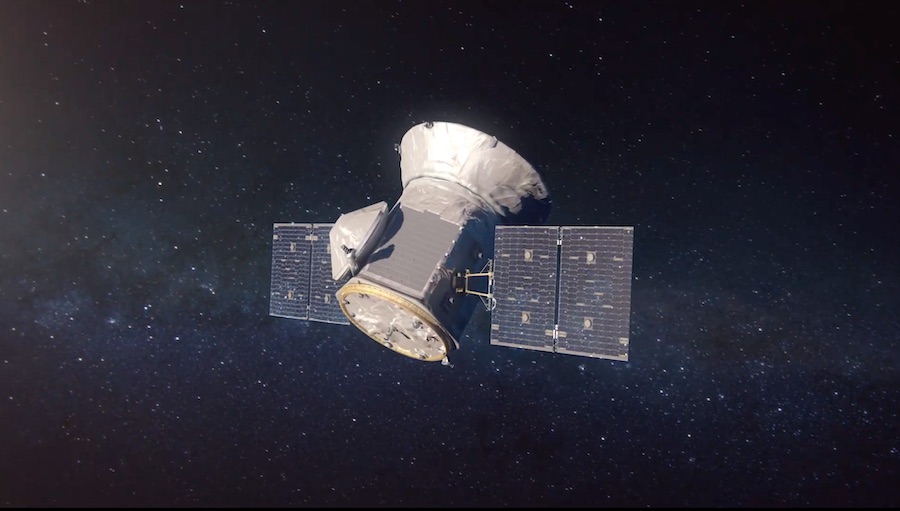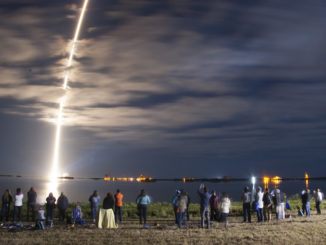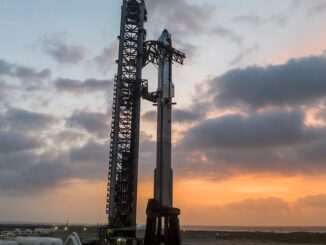
Scientists crunching data from NASA’s orbiting TESS planet-hunting observatory have discovered a potentially habitable Earth-sized world circling a star a bit more than 100 light-years from the sun, the first such detection by the TESS mission since its launch in 2018, astronomers announced this week.
NASA’s Transiting Exoplanet Survey Satellite is scanning stars across the northern and southern sky for periodic dips in brightness, a tell-tale signature from a planet blocking a fraction of the starlight reaching TESS’s four ultra-sensitive cameras.
The potentially habitable planet, designated TOI 700 d, is likely rocky, according to astronomers. It lies within its host star’s habitable zone, the region where temperatures are not too hot or too cold to allow liquid water on a planet’s surface. NASA’s Spitzer Space Telescope, due to end its mission later this month, confirmed TESS’s discovery.
“TESS was designed and launched specifically to find Earth-sized planets orbiting nearby stars,” said Paul Hertz, astrophysics division director at NASA Headquarters in Washington. “Planets around nearby stars are easiest to follow-up with larger telescopes in space and on Earth. Discovering TOI 700 d is a key science finding for TESS. Confirming the planet’s size and habitable zone status with Spitzer is another win for Spitzer as it approaches the end of science operations this January.”
Unlike NASA’s Kepler space telescope, which ended its mission in 2018, TESS is designed to search for planets around relatively bright, nearby stars, providing candidates for follow-up studies by more powerful observatories, such as the James Webb Space Telescope scheduled for launch in 2021.
Kepler’s nine-year mission resulted in the discovery of around 2,700 planets around other stars, providing astronomers with the majority of the current confirmed catalog of exoplanets, according to NASA.
NASA says astronomers using data from the TESS mission have confirmed the discovery of 37 new exoplanets to date, plus more 1,500 additional candidates that could be confirmed with additional observations.
Only a few potentially habitable exoplanets have been verified to date, including worlds detected by Kepler, Spitzer and ground-based observatories.

TOI 700 d is one of three confirmed planets in the TOI 700 planetary system, but the only one within the star’s habitable zone. The other two planets orbit closer to their host star, where astronomers say scorching temperatures would likely prevent the formation of living organisms.
The TOI 700 planetary system is located a bit more than 100 light-years from the sun in the southern constellation Dorado. TOI 700 is an M-dwarf-type star, with roughly 40 percent of the mass and size of the sun, and about half its surface temperature, according to astronomers.
Orbiting high above Earth, TESS uses four cameras to monitor swaths, or sectors, of the sky for 27 days at a time. NASA said the TOI 700 star appeared in 11 or 13 sectors observed by TESS in the first year of its mission, allowing the satellite to see multiple transits of all three planets in the TOI 700 system.
Because TOI 700 is much dimmer and cooler than the sun, the habitable zone is significantly closer to the star than the Earth is to the sun. The TOI 700 d planet is about 20 percent larger than Earth and orbits its host star once every 37 days. It receives about 86 percent of the energy the sun supplies to Earth, according to NASA.
The star was initially wrongly classified in TESS’s database, NASA said, meaning astronomers assumed the planets detected by the TESS observatory were larger and hotter. Once teams corrected the error, calculations showed TOI 700 d may have a more temperature climate, is closer to Earth in size, and is likely rocky.
“When we corrected the star’s parameters, the sizes of its planets dropped, and we realized the outermost one was about the size of Earth and in the habitable zone,” said Emily Gilbert, a graduate student at the University of Chicago. “Additionally, in 11 months of data we saw no flares from the star, which improves the chances TOI 700 d is habitable and makes it easier to model its atmospheric and surface conditions.”

The the innermost of the two hotter planets closer to TOI 700 is likely rocky, while the system’s middle planet may be largely made of gas, astronomers said.
All three planets in the TOI 700 system are believed to be tidally locked to their star, meaning the same face of each world is constantly in daylight. This means if TOI 700 d has an atmosphere with moderate temperatures, its weather and climate is probably significantly different than Earth’s.
Scientists plugged known parameters about TOI 700 d into a computer model to generate 20 different predictions of the climate conditions the planet may harbor. The scenarios modeled included a possibility that TOI 700 d is an ocean world with a thick carbon dioxide-rich cloud-filled atmosphere, and another model output suggested the planet might have a cloudless sky and an all solid-landscape.
The models produced spectral signatures for each scenario. Future large telescopes could directly image TOI 700 d and measure the spectra of the planet and its atmosphere, allowing scientists to determine its chemical composition.
“Someday, when we have real spectra from TOI 700 d, we can backtrack, match them to the closest simulated spectrum, and then match that to a model,” said Gabrielle Engelmann-Suissa, a Universities Space Research Association visiting research assistant at NASA’s Goddard Space Flight Center, in a statement. “It’s exciting because no matter what we find out about the planet, it’s going to look completely different from what we have here on Earth.”
Email the author.
Follow Stephen Clark on Twitter: @StephenClark1.



